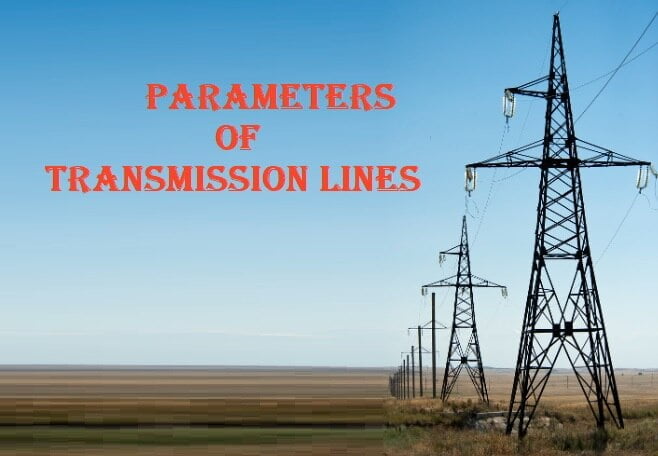Understanding the Crucial Parameters of Transmission Lines
Introduction:
Transmission lines form the backbone of our power infrastructure, facilitating the efficient and reliable transfer of electricity over long distances. The design and performance of these transmission lines are influenced by a multitude of parameters, each playing a crucial role in determining their efficiency, capacity, and overall reliability. In this comprehensive article, we will delve into the various parameters that engineers and planners meticulously consider during the design and construction of transmission lines. Also read details about Classification of Transmission Lines.
Parameters of Transmission Lines

Voltage Level:
The voltage level of a transmission line is a fundamental parameter that significantly impacts its power-carrying capacity and transmission distance. High voltage (HV), extra high voltage (EHV), and ultra high voltage (UHV) transmission lines each serve specific purposes, and their design is tailored to meet the demands of the electrical grid.
Current Carrying Capacity:
The current carrying capacity of a transmission line is a critical factor in determining the maximum amount of electrical current it can safely handle without surpassing its thermal limits. This capacity depends on various factors, including conductor size, material, and ambient temperature, all of which must be carefully considered during the planning and design stages.
Line Length:
The length of a transmission line directly influences the amount of power loss during transmission. Engineers must navigate the balance between efficiency and cost-effectiveness, especially when dealing with longer lines that inherently result in higher resistive losses.
Conductor Size and Material:
The choice of conductor size and material is pivotal in determining the current-carrying capacity and electrical resistance of a transmission line. This section will explore the properties of common conductor materials such as aluminum and copper, and the considerations that go into selecting the appropriate size for different power transmission requirements.
Line Configuration:
Transmission lines can be configured in various ways, including single-circuit, double-circuit, or multi-circuit setups. Each configuration has implications for the overall capacity and redundancy of the transmission system, and engineers must carefully evaluate these options to meet the specific needs of the power grid.
Line Impedance:
The impedance of a transmission line, encompassing resistance, inductance, and capacitance, directly affects the line’s ability to transfer power efficiently. This section will explore the nuances of line impedance and its impact on voltage drop along the line.
Line Insulation:
Insulators are crucial components that support conductors and isolate them from transmission towers or poles. The type and quality of insulators play a pivotal role in determining a transmission line’s ability to withstand electrical stresses and environmental conditions.
Line Losses:
Power losses are inherent in transmission lines due to the resistance of conductors and other components. Minimizing these losses is essential for efficient power transfer, and engineers employ various strategies to achieve this, from conductor material selection to advanced monitoring and control systems.
Corona Effect:
Corona discharge, a phenomenon occurring when the electric field strength around conductors exceeds a certain threshold, can lead to power losses and radio interference. This section will explore the corona effect, its consequences, and the measures taken in the design of transmission lines to control or mitigate it.
Sag and Tension:
Transmission lines experience sag due to the weight of conductors and environmental conditions. Proper tensioning and sag control are imperative for ensuring safe and reliable operation, and this section will delve into the engineering considerations involved.
Right-of-Way:
The right-of-way refers to the land or space required for the construction and maintenance of transmission lines. Obtaining the necessary rights-of-way and addressing environmental concerns are critical aspects of project success, and this section will provide insights into the challenges and strategies associated with securing the required space.
Conclusion:
In conclusion, the parameters discussed above collectively form the intricate web of considerations that engineers and planners navigate when designing transmission lines. Achieving an efficient and reliable transmission system requires a delicate balance of these parameters, taking into account the specific needs and challenges of the power grid. As technology continues to advance, innovations in materials, monitoring systems, and design methodologies will further shape the future of transmission lines, ensuring the con
 Electrical Engineering World Wiring a Brighter Tomorrow!
Electrical Engineering World Wiring a Brighter Tomorrow!


